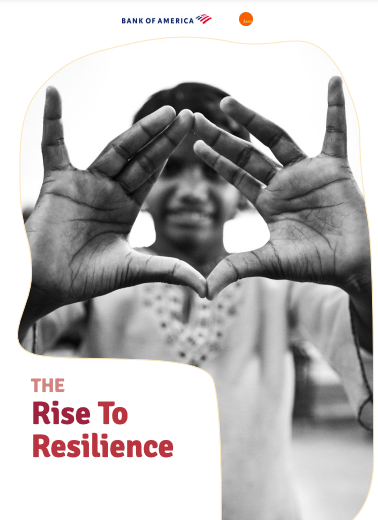Seen, But Not Heard - Exploring intersections: Climate change, gender and adolescentsThis report “Exploring intersections: Climate change, gender and adolescents” is an attempt by Dasra and the India Climate Collaborative to draw attention to the unique space that girls and women occupy in the climate crisis today.
|
Buffering NowThis report highlights the value and role of digital tools in on-ground programming, highlighting learnings from 10 trailblazers in the sector today. As more and organizations, institutions, and government bodies begin to introduce technology in their programming for the sector, 10 to19 aims to demystify digital inclusivity and create actionable insights for NGOs, especially those catering to adolescents.
|
10to19 Dasra Adolescents Collaborative- 2017-2021 Progress and Lessons LearnedThis document shares our qualitative achievements with our partners and the sector over the past four years of 10to19 (2017-2021) and lays the foundation for understanding the Collaborative’s future strategic priorities
|
The Rise to ResilienceThe COVID-19 pandemic has had a gruelling impact on the lives of many vulnerable and marginalized groups in India, the adolescent demographic in particular. Adolescents in India have long faced obstacles across education, nutrition, safety, livelihood, mental health and sexual & reproductive health services and entitlements. The past two years have only further widened these gaps. At the 10to19: Dasra Adolescents Collaborative, we keep young people at the centre of our goals and priorities, and are steadfastly committed to assessing, ensuring and advocating for their holistic development.
The Rise To Resilience therefore documents the experiences of adolescents and youth-serving NGOs through the first and second waves of the COVID-19 pandemic, and puts forth learnings and recommendations that can help build resilience for NGOs in the long run, both from a programmatic and an institutional lens. With a focus on Jharkhand, this documentation encompasses practices that may be scaled for adoption nationwide. |
Making Poor Migrant Women Workers VisibleAs part of a flagship project that applies an intersectional approach in the context of poor migrant women workers, Dasra has attempted to visibilise this group and capture intersectional practices among grassroots non-profits, within India. Supported by Robert Bosch Stiftung, the project is part of a global initiative to understand what intersectionality means in practice, and how it can be used to address systemic inequalities. Currently, Dasra is working to support the informal worker space through multiple efforts. This project is another step in this direction.
|
India Philanthropy Report 2022
|
10to19 Dasra Adolescents Collaborative- Plans & Priorities 2022-2027This document summarises the Collaborative’s revamped DAC 2.0 strategy and lays out the Why/ What in terms of the Problems faced by the Sector, the Opportunity at hand, The Initiatives being taken and the Intended Outcomes behind the future strategic priorities.
|
Let's Go Home - A family for every child in IndiaThe child protection landscape in India, while sound in articulating its intent of universal coverage of right to family for all children everywhere, faces multiple execution challenges. This report places children at the centre of its approach to understand the challenges that deprive children of family-based care, and identify key gaps in services and strategic areas for investment and action. The report also profiles outstanding non-profit organisations that are working in this space in India.
|
Inclusive by Design: Cementing the Future for Informal Workers in India's Construction SectorThe construction sector employs the maximum number of informal workers, who are predominantly migrants. Fast-paced urbanisation and a high demand for low-skilled workforce are pull factors for this vulnerable demographic. Government data estimates that the sector employs 57 million workers, a total of 50 million men and 7 million women. The construction sector is also the single largest absorber of informal workers. Due to the low entry barriers for recruitment, the industry employs a large chunk of the surplus of India’s non-agricultural workforce.
The report demonstrates the lay of the land, the roles of different stakeholders involved (industry, government, non-profits, contractors and community), challenges across workers’ journeys (at source, destination and across), as well as, on how their social locations shape their interactions within the construction space. |









